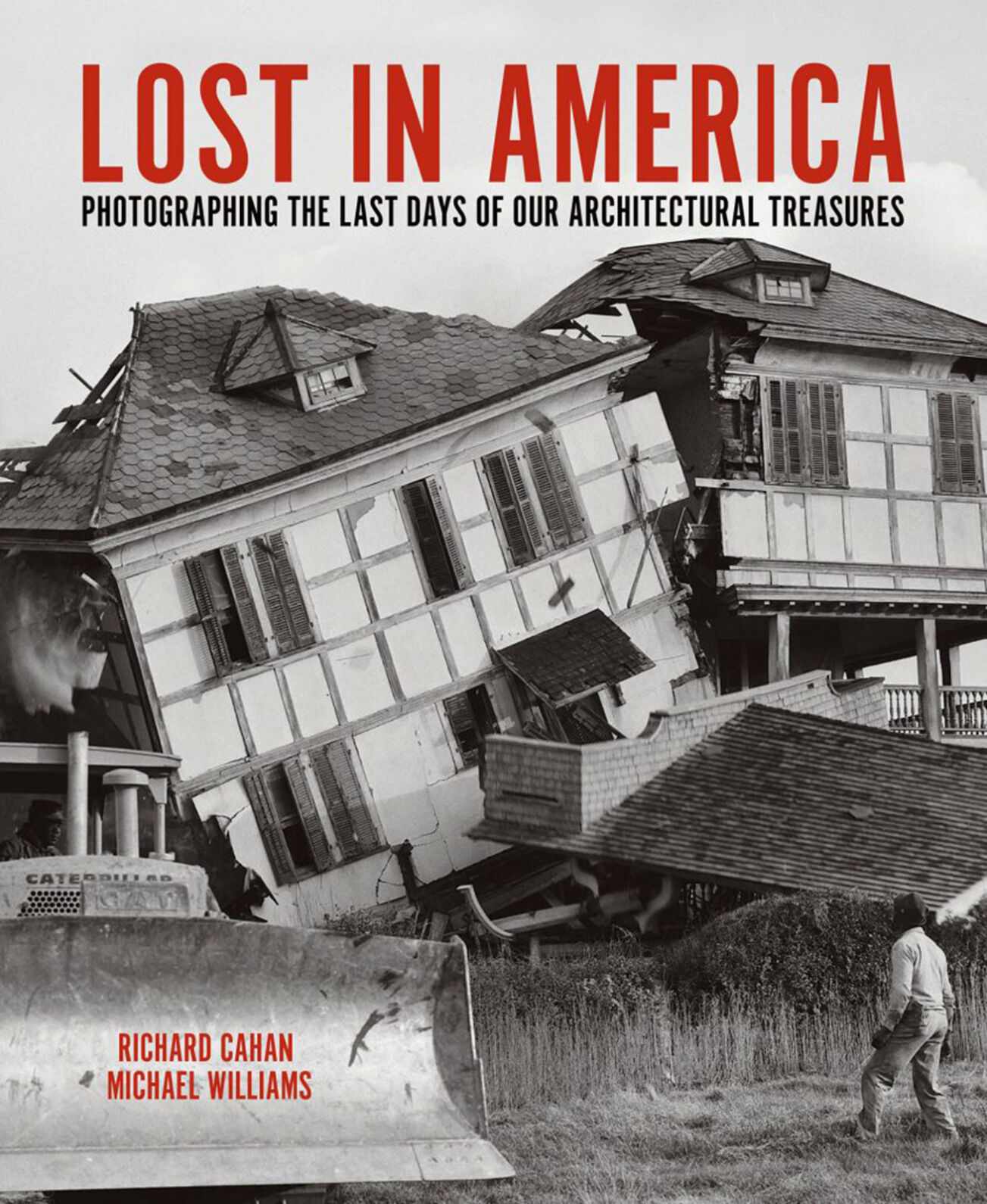A building is not, of course, a living thing but buildings can die and a fascinating, indeed haunting, new book offers us a graveyard in black and white.
“Lost in America: Photographing the Last Days of Our Architectural Treasures” is the latest visually striking, marvelously written offering from Richard Cahan and Michael Williams, who have been at this for more than 20 years with their CityFiles Press.
Cahan, a former photo editor of the Chicago Sun-Times, and Williams, a writer and designer, claim to have never had any arguments in that time, “except on the basketball court.” Operating in the increasingly chaotic book publishing realm, they have been craftsmen of the highest order and have produced a steady stream of books.
Many of their initial offerings had a strong Chicago focus but that has expanded.
“Our first books are firmly Chicago books and some of our great photographers like Vivian Maier,” Cahan told me. “But in time we began to explore issues that we felt were important to America, such as the incarceration of Japanese Americans during World War II, slavery and the Civil Rights movement.”
“Lost in America” is 208 remarkable and handsomely packaged pages, beginning with a short foreword by Catherine Lavoie, who writes, “Buildings mark who we are as a society. Buildings have the ability to inspire change, facilitate social reform, fuel cultural movements or simply help us envision better ways of living.”
She is the chief of the Historic American Buildings Survey of the National Park Service, a government group that for 90 years has used a small team of freelance photographers to, as she puts it, make “one of the world’s most substantial archives of the built environment.” Indeed, the HABS program now has more than 200,000 photos taken at 34,000 sites.
One of the photographers in the book is Richard Nickel, the Chicagoan who died tragically in the wreckage of Louis Sullivan’s Chicago Stock Exchange building in 1972 and is the subject of a previous CityFiles book, 2015’s “Richard Nickel: Dangerous Years: What He Saw and What He Wrote.”
Nickel’s photographs share this book’s pages with other HABS photographers, such as Stephen D. Schafer, who says, “If the buildings documented by HABS were people, you’d take them straight to a hospital. Instead, we push them straight into the grave.”
All photos have been taken in the same fashion, without artistic pizzazz. Rather than being visually redundant, this black-and-white parade gives the book a compelling dramatic punch.
The book is national in scope, with photos from around the country. And so, we have some relatively prosaic three-story homes near Cincinnati’s City Hall and then the glories of Pennsylvania Station in New York City, both erased from the face of the planet, in the 1980s and 1963, respectively. As for the other buildings in the book, some died with a whimper, while a few were attended by the rage of preservationists, historians, architects and other concerned citizens.
“These are not all landmarks,” Cahan tells me. “But they are important buildings in American history and communities. They may not be the greatest architecture, but they each tell the story … of plantations and slave quarters, ballparks, music halls, steel mills.”
And more.
Naturally, Chicago is featured and among the ghosts are the Republic Building, Garrick Theater, Stock Exchange Building, Granada Theater, Dearborn Station Trainshed and First Regiment Armory.
The Granada “was one of the largest and most ornate movie palaces ever built,” Cahan and Williams write. “After years of abandonment, the end came swiftly. At the last minute, developers offered to keep the theater’s facade pasted on the exterior of their new apartment building but preservationists rejected the proposal. They wanted the entire building. They want the entire building.”
Gone, gone, gone, so many buildings. (Also see 1975’s “Lost Chicago,” by David Garrard Lowe). But not likely to be forgotten since Cahan and Williams provide sparkling and informative text to accompany all the photos, sort of like mini-biographies or, if you will, ghost stories.
And do not bypass the book’s final page, for it details how Cahan and Williams explain “the great American road trip-pandemic style” that allowed them to research and build this book
As Cahn told me, “We visited all of these sites via Google Street View. We traveled the country many times (via computer) to figure out if these buildings still stood. The HABS website shows what was photographed, but we didn’t know which ones still stood.”
Not enough, in part because, as they write on that final page, “We believe buildings reflect our culture and mark our spot in the universe.”


